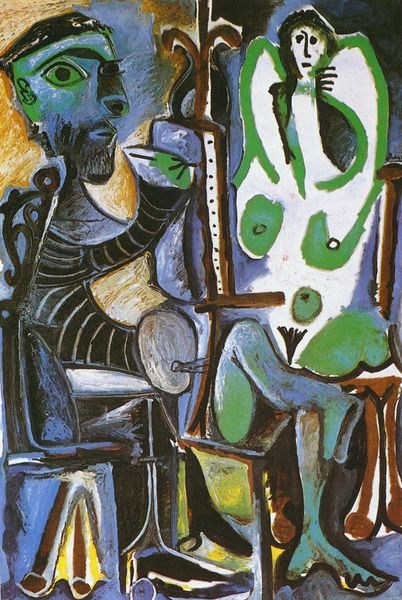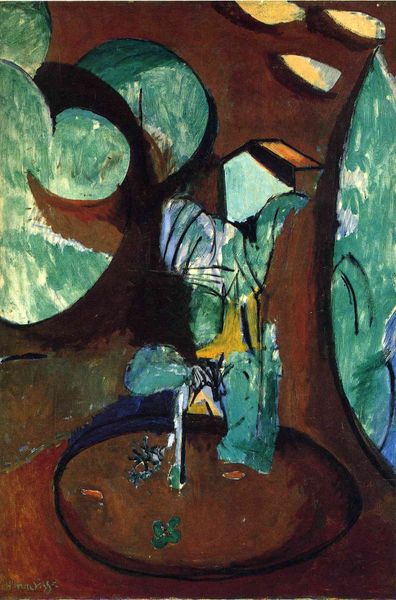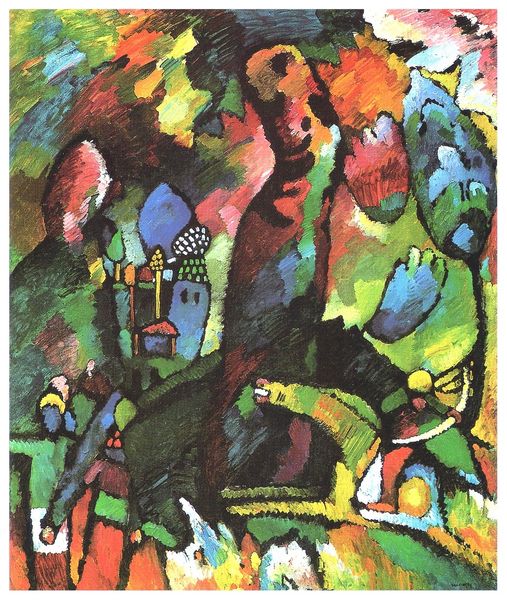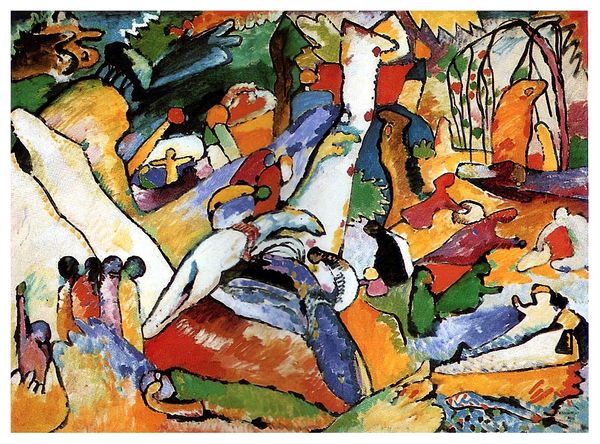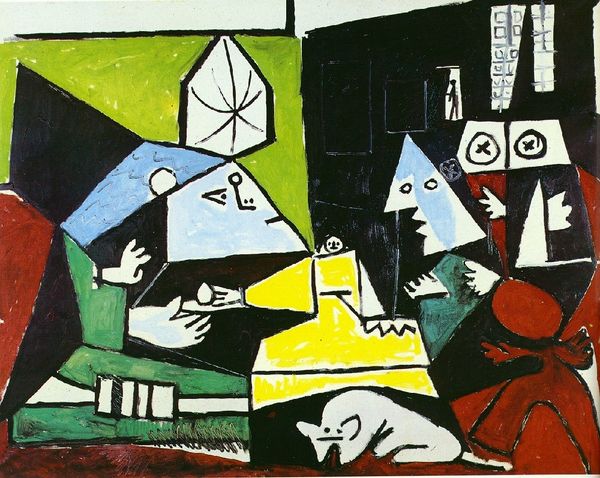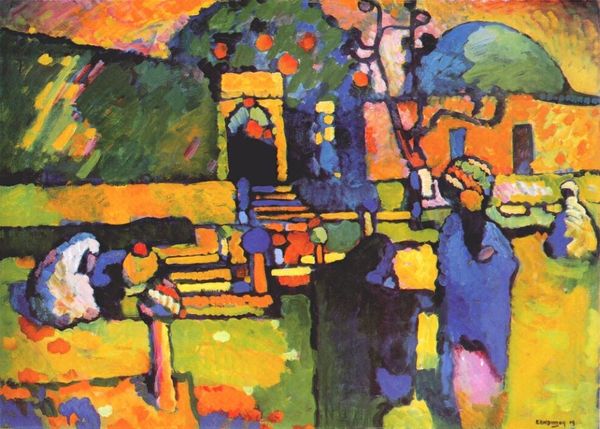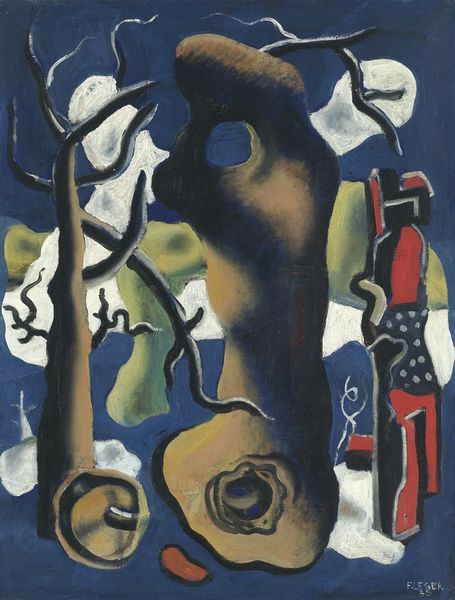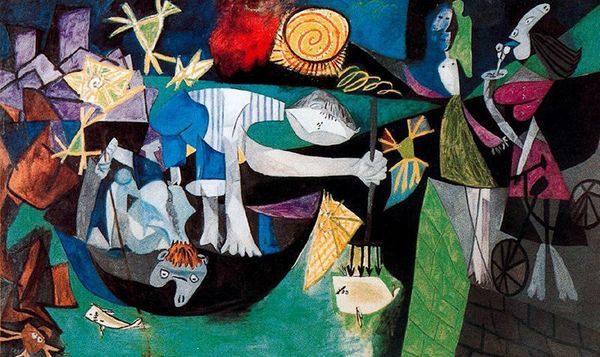
Copyright: Pablo Picasso,Fair Use
Curator: Here we have Pablo Picasso's 1960 oil on canvas, "The Luncheon on the Grass (after Manet)," housed at the Musée Picasso in Paris. Editor: My immediate reaction is disorientation—a sense of figures fragmented and reassembled amidst a vibrant yet chaotic landscape. The painting feels both playful and unsettling. Curator: Indeed. Picasso returns to Manet's scandalous scene almost a century later. His Cubist lens radically transforms it, moving beyond mere representation to an exploration of form and perspective. It raises crucial questions: How does a canonical artwork from one era translate to another marked by different aesthetic and social politics? What does Picasso's reinterpretation tell us about gender, spectatorship, and the male gaze, particularly considering his personal history? Editor: The fragmentation certainly intensifies the symbolism. The nude woman, so central to Manet's original, is rendered in broken planes, her body a puzzle. It suggests a dissection of the female form, but perhaps also a challenging of singular, fixed representations of women in art. And the abundance of lush, green foliage; even fractured into component shapes it remains symbolic of the natural, unspoiled setting that both invites and witnesses the unfolding scene. Curator: Absolutely. And notice how Picasso maintains a visual conversation with the source material while subverting it. The composition echoes Manet, yet the flattening of space and the geometric abstraction inject a distinctly modern unease. Editor: I see what you mean, and the persistence of certain motifs across centuries emphasizes a continuity in visual language even as artistic styles and social norms evolve, wouldn't you agree? The act of picnicking itself, the gathering in nature, these become recurring symbols. Curator: Precisely. It underscores how symbols themselves are constantly renegotiated and reimagined within evolving contexts. It begs the question— whose gaze are we implicated in? Editor: It's fascinating how Picasso both acknowledges and critiques art history here. This pushes me to consider: What are the underlying stories that familiar forms like the nude are consistently used to tell across movements? Curator: Exactly. Hopefully, examining his choices and their impact provokes similar questions. Editor: It’s provided rich insights. Thank you!
Comments
No comments
Be the first to comment and join the conversation on the ultimate creative platform.
